

Ju 188A
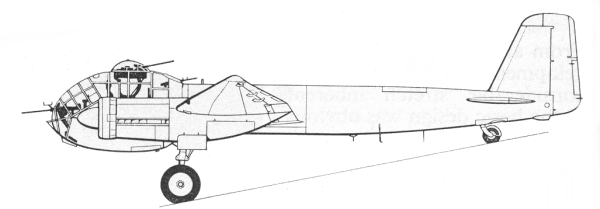
The Ju 188 grew out of a need for an interim replacement for the Ju 88 when it was realized that the planned replacement version, the 288 was going to be seriously delayed. Fortunately, Junkers had been working towards that end on their own in spite of having the 88 design frozen to prevent delays in its delivery. The RLM insisted that the aircraft be capable of accepting either BMW radials or the Jumo 213 with no changes to the engine bearers to eliminate production delays due to engine shortages. As a result the E model preceded the A on the assembly line as the E was to get the BMW engines and they were available before the Jumo 213's. By mid 1943 both versions were rolling of the assembly line. The A-0 pre-production varient left the factory during the Spring of 1943. These were not fitted with dive brakes or automatic pull-out gear, being intended for the level bombing role. The A-1 version was intended for the dive bombing role but the requirement was eliminated by the Luftwaffe high command. The A-2 varient, which replaced the A-1, was based on the A-0 varient but had improved engine performance due to an auxiliary fuel injection system and VS 111 variable pitch propellers. It began to leave the assembly lines early in 1944. The A-3 varient, also based on the A-0, differed from the A-2 solely in having the outboard racks beneath the wing center section deleted. It was built in small numbers and was intended for the torpedo bombing role. It could carry a pair of 1764 lb. torpedos under the wings and a long bulged housing on the starboard side of the nose contained the equipment for adjusting the steering mechanism of the torpedos. All told 1,237 examples of the 188 were built.
The Kit
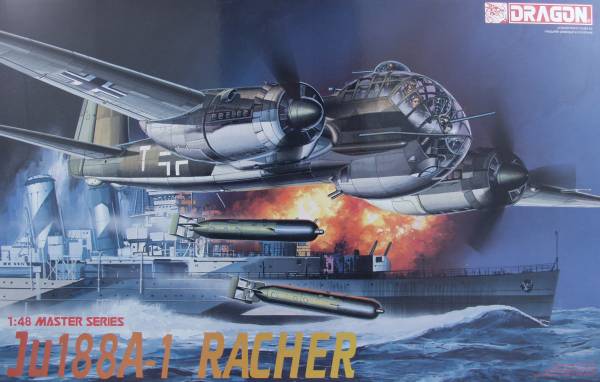
The Dragon kit comes in a top opening two part box that has a heavier gauge corrugated bottom which makes for a nice sturdy package. Most of the sprues are individually bagged except in the case where duplicates are supplied and a couple other exceptions. each of the photoetch frets are bagged separately as were the decals. It contains many of the same parts that the two Promodeler versions but there are different parts and some of the sprues are arranged differently so rather than referring back to the Ju 88 review I will start from scratch and show all the sprues here.
The most obvious difference is the forward fuselage and glazings which are all new as well as some of the interior parts. The rear radio rack is the same but most everything else is new. The wings, engines and fuselage aft of the cockpit with the exception of the vertical tail and rudder are the same as the Ju 88. There are a few changes however. The Ju 188 has a longer wing span so the wing tips are longer. These are also accomplished in a different manner. The top surface and wing tip top and bottom is one piece with a filler piece for the bottom. Also on the Ju 88 the elevators and rudder were molded fixed as part of the vertical and horizontal stabilizers but on the 188 they are separate parts so they can be positioned as desired. The plastic is a light gray in color and the panel lines are recessed. Most of the parts have matte finish to them and under a magnifier it appears rough but it feels smooth to the touch and don't expect it to cause any problems. I did not find any surface defects on the major pieces, a few parts have some light flash and the smaller parts have a minimal amount of parting line to clean up.
Some of the fit issues are a result of partitioning the fuselage for multiple versions. The dividing line occurs such that it splits the wing root and that tends to be one fit area, also with the wing tips being separate, one must check to verify that they match the wing thickness prior to attaching them or you may end up filling and sanding there as well. The kit has no alignment pins and it will be to your advantage to treat it as a limited run kit, even though for the most part things fit fairly well. There were some light ejector pin marks on the interior that would be seen but they should not be too hard to fix. The interior is very nicely rendered but you are on your own for harnesses and seatbelt.
The kit does come with two small frets of photoetch to dress things up a bit. The kit comes with two torpedoes as that was one of the roles that the Ju 188 was called upon to play, there are no other bombs or weapons supplied. The propellers, which were not quite right in the Ju 88 kits seem to be OK in this kit. The total part count of gray parts is 197. The clear parts are very nice both thin and clear and although they were bagged separately my example had scratch or defect across two of the pieces. One was on the inside and may be tough to polish out. Total number of clear parts is 17. The total number of photoetch parts is 26 bringing the grand total to 240 by my count. Since the kit is designed to cover more than one variant there are some parts that will not be used on this variant. Photos of the contents follows...
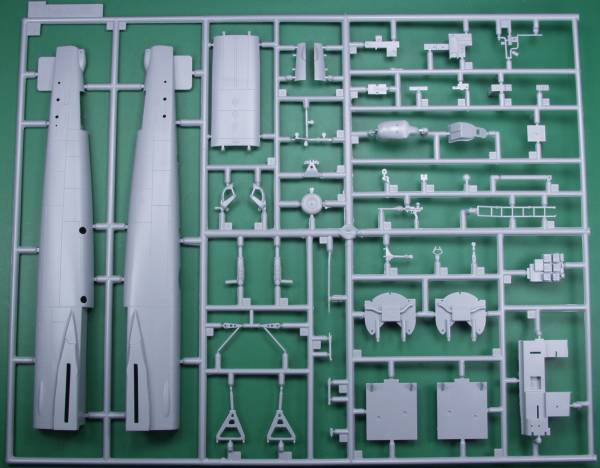
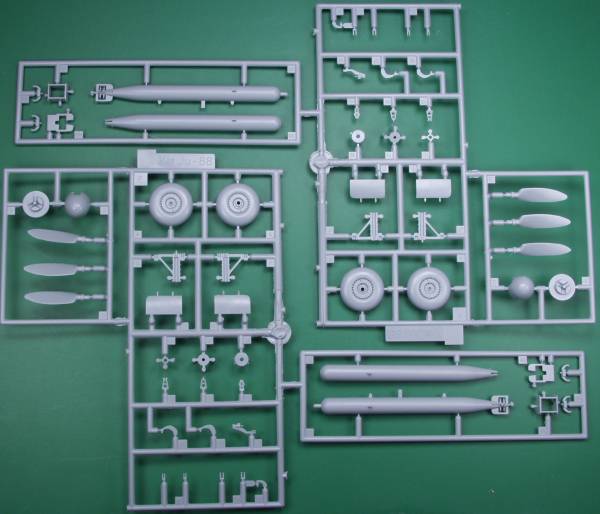
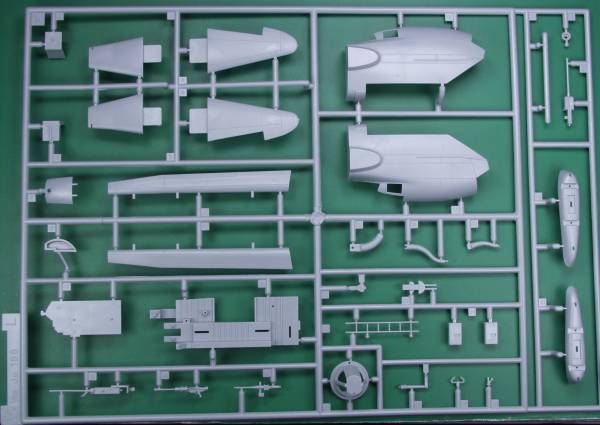
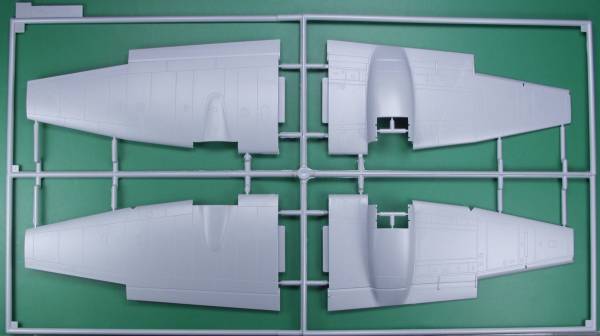
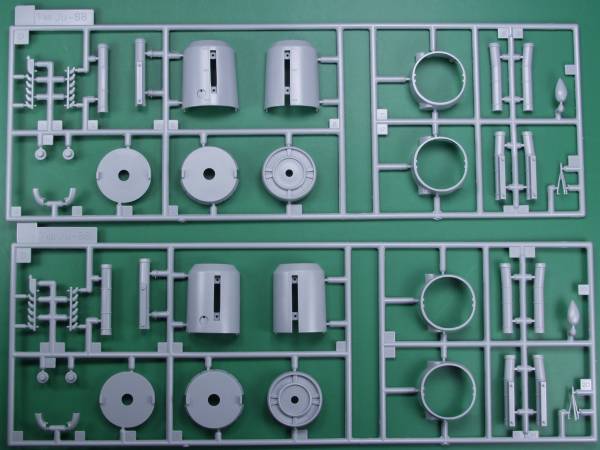
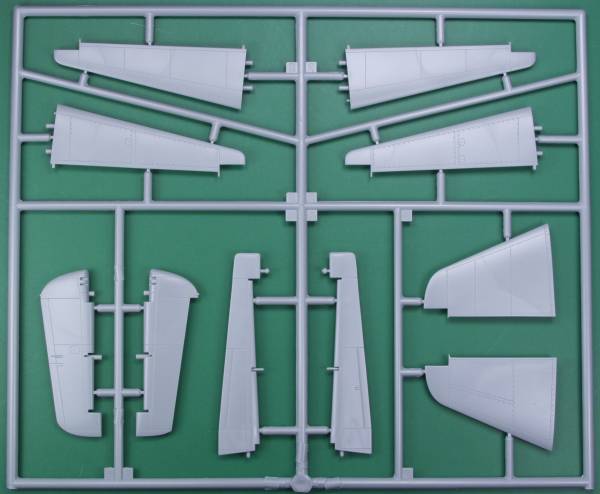
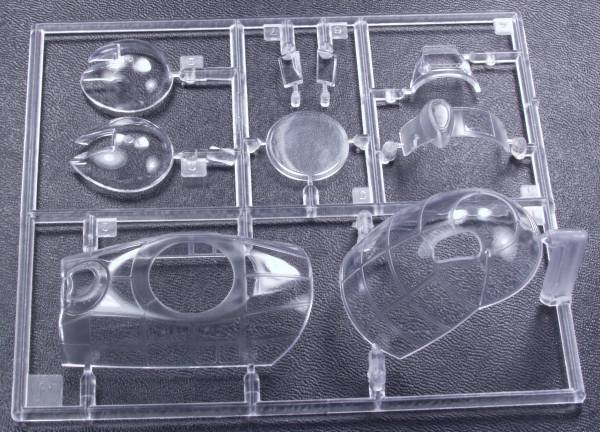
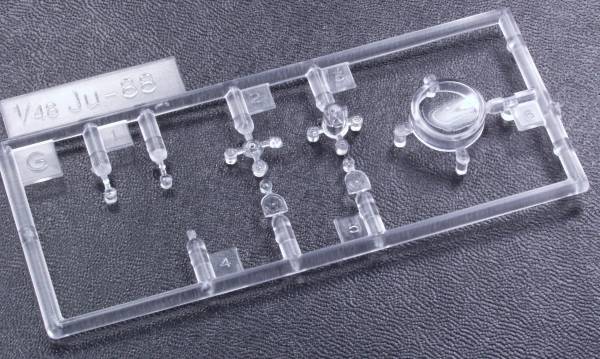
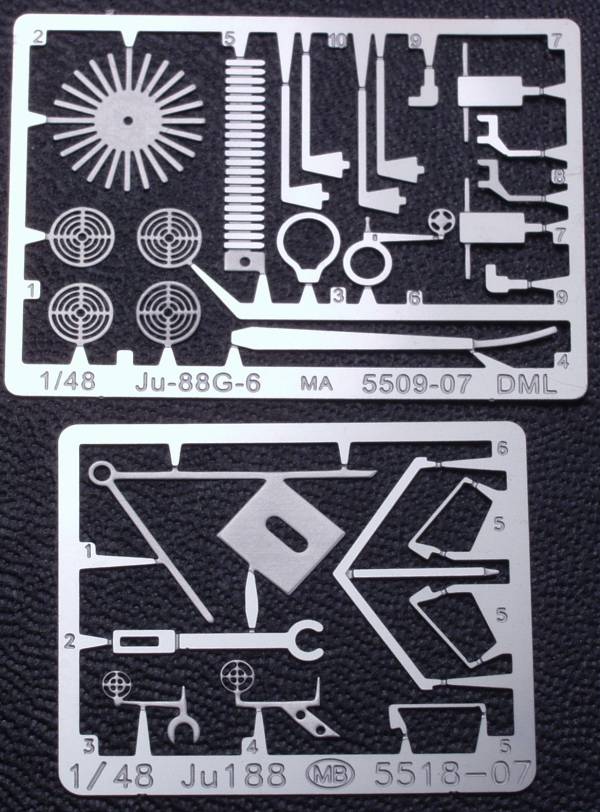
The decals provide marking for two aircraft, one an A-1 version and the other an A-3. The A-3 was the torpedo carrying version yet the boxtop art carries the marking provided for the A-1 version and it is shown launching torpedoes. Both aircraft are a bit plain but late war markings tended the be more simplistic. They appear thin but may be slightly opaque. My kit was run in 1994 according to the copyright on the decals and the white appears to have slightly yellowed. There are a few stencils provided but compared to the Promodeler Ju 88 kits the decals are a might stingy. The decals are shown below.
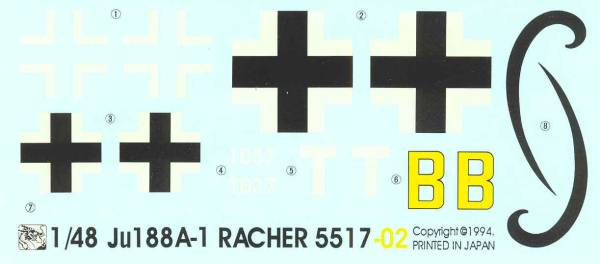
The instructions are printed on one large sheet, 14" by 33" which is folded in quarters. There is a page of history in six languages, a page with sprue maps, a half page with safety warnings and a paint color table that lists colors by name in several languages and Gunze acrylics numbers were applicable. The balance is assembly and markings instructions. While not as extreme as the booklet supplied with the Promodeler Ju 88 kits it is certainly adequate.
After Market Goodies
As of this date the only aftermarket items I could find specific to the Ju 188 are Eduard masks [EUEX151], Vacuform canopys from Squadron [9638] and replacement wheels that work on all Ju 88 / 188 models from True Details [48029]. Some parts from most of the aftermarket kits for the Ju 88 could be used on this kit. I chose not to use any of these items as the kit parts seemed satisfactory to me.
Eduard has released a new color photoetch set with self adhesive parts [49400]and a Zoom color set [FE400]. I opted for the Zoom set. While listed for the E model it will work equally well for the A. It uses the new layered system for the panels instead of a film that needs to be painted on one side and the self stick means no glue to mess with. The set is pretty basic and includes self adhesive color replacements do the instrument panels and radio rack gear as well as throttle and mixture levers and bezels for them and a few other bits of window dressing. Just enough to add some detail without going over board. See photo below.
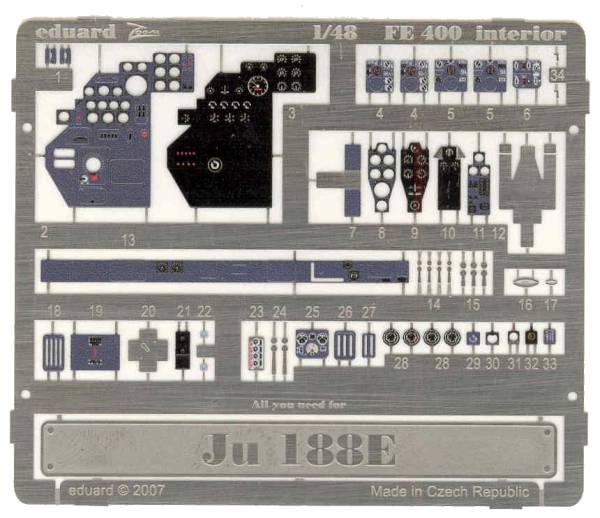
Conclusions
This kit, like the Ju 88 kits can be built into a very attractive model with a little patience. Due to its complexity and the typical fit issues that Dragon kits exhibit, I would not recommend it to beginners. It has always been one of my favorite aircraft and I'm looking forward to building it. I will be looking for some more interesting paint and marking schemes than those provided with the kit.
Links to kit build or reviews
A review / build can be found here and here.
References
"Black Cross Volume 1 Junkers Ju 188" by Helmut Erfurth
Last updated 4/17/08